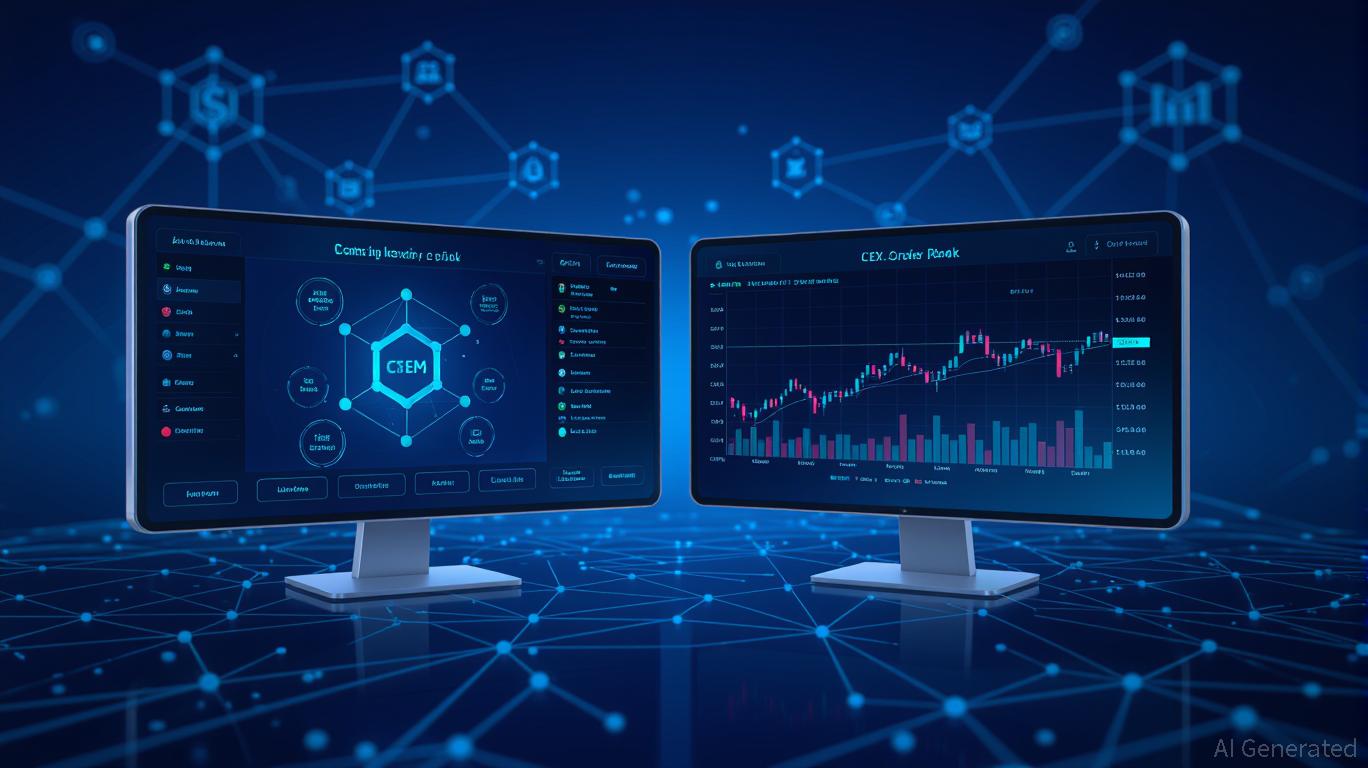Uniswap News Today: Uniswap Activates Fee Switch, Burning Tokens to Boost Holder Value
- Uniswap activates a fee switch to redirect trading fees to UNI tokenholders, boosting UNI's price by 38% to $9.70. - The proposal burns 1 billion UNI (16% of supply) and creates a "token jar" mechanism to reduce circulating supply and incentivize burns. - This deflationary strategy, combined with a merged governance structure, aims to generate $2B+ annual revenue while solidifying DeFi dominance.
Uniswap, recognized as the top decentralized exchange (DEX) on
The "UNIfication" governance proposal presents a comprehensive approach to better align the protocol’s financial incentives with the interests of tokenholders. Central to this plan is turning on the fee switch, which will direct a share of trading fees into a "token jar" that users can access by burning UNI tokens, as described in
Initially, the fee switch will be enabled for Ethereum mainnet v2 pools and v3 pools, which together account for 80%-95% of liquidity provider (LP) fees, before expanding to Layer 2 solutions like Unichain and aggregator hooks, as outlined in
Uniswap’s leadership described these updates as ushering in a "new era" for the protocol, combining the non-profit Uniswap Foundation with Labs, the group responsible for protocol development, as mentioned in
The market has responded strongly, with UNI’s market cap climbing above $6 billion and the token moving up to become the 34th largest cryptocurrency, as reported in
Disclaimer: The content of this article solely reflects the author's opinion and does not represent the platform in any capacity. This article is not intended to serve as a reference for making investment decisions.
You may also like
Fed Focuses on Controlling Inflation Rather Than Boosting Economic Growth
- The Boston Fed urges delaying rate cuts until inflation nears 2% target, citing risks of premature easing in a still-inflationary environment. - Atlanta Fed's Bostic emphasizes inflation as the "clearer and more urgent risk" over labor market signals, reflecting hawkish policy divisions. - Fed officials consider resuming asset purchases post-October rate cut to maintain liquidity while avoiding inflationary spikes from tariffs. - Policy balancing act emerges: rate cuts could stimulate growth but risk rei
DASH Aster's DEX Launch: Ushering in a New Era for On-Chain Advancements and DeFi Integration
- DASH Aster's DEX combines AMM-CEX architecture with yield-collateral models, driving DeFi adoption through institutional-grade liquidity and 5-7% staking yields. - Cross-chain interoperability across BNB Chain, Ethereum , and Solana enables seamless asset transfers, boosting $12.9B cumulative trading volume and $17.35B TVL post-TGE. - Institutional validation from Binance's CZ and Coinbase's listing roadmap, alongside 30% price surges and 800% volume spikes, solidifies market credibility. - Tokenomics of

Fed Split: Should They Prioritize Fighting Inflation or Supporting Employment?
- Fed policymakers remain divided over prioritizing inflation control or labor-market support, with hawks like Bostic urging rate stability until inflation nears 2%. - Dovish officials argue slowing job growth (29,000 monthly payrolls in late 2024) demands rate cuts to sustain economic momentum despite inflation risks. - Tariff adjustments and delayed economic data complicate decisions, with Treasury's import relief measures facing criticism for potential inflationary rebound. - Looming student loan tax ch

YFI has dropped 7.68% over the past week during a period of heightened volatility and ongoing downward momentum
- YFI fell 7.68% weekly to $4747, reflecting ongoing bearish sentiment amid broader market weakness. - Technical indicators show bearish alignment (EMA/SMA below price) and key support at $4500–$4600 as critical near-term levels. - Historical backtesting reveals limited post-crash recovery potential, with buy-and-hold win rates between 48-62% after 10%+ drops. - YFI remains vulnerable to further declines without a significant shift in market dynamics or bullish catalysts.